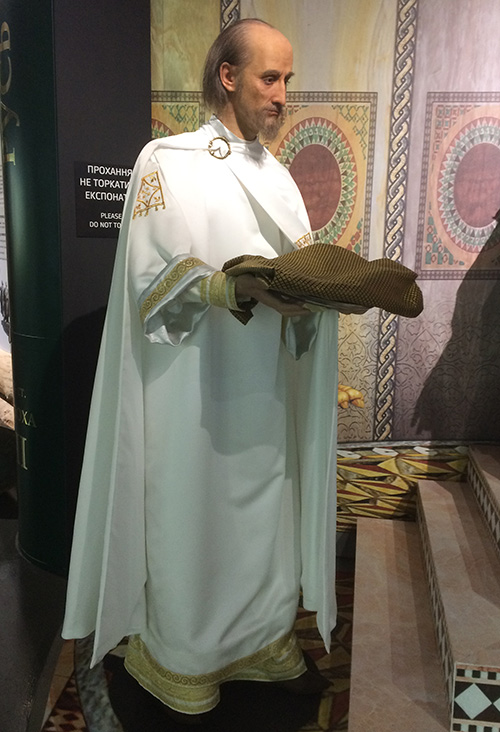 Ruthenia or Kyivan Rus was a rather wealthy and expanded state in Europe in the 9th-13th century. Its rulers could afford the most expensive jewelry, the finest fabrics, and the most elaborate embellishments. Still, at the time, people used only natural materials, but they knew well how to handle these materials and make really exceptional clothing pieces and jewels out of them. Unfortunately, there are very few jewelry pieces (we can find in museums and private collections) and no outfits at all that survived to this day, but here are lovely and accurate modern replicas of costumes used by Ruthenian royals and other citizens.
Ruthenia or Kyivan Rus was a rather wealthy and expanded state in Europe in the 9th-13th century. Its rulers could afford the most expensive jewelry, the finest fabrics, and the most elaborate embellishments. Still, at the time, people used only natural materials, but they knew well how to handle these materials and make really exceptional clothing pieces and jewels out of them. Unfortunately, there are very few jewelry pieces (we can find in museums and private collections) and no outfits at all that survived to this day, but here are lovely and accurate modern replicas of costumes used by Ruthenian royals and other citizens.
Read also:
Royal clothing in Kyivan Rus in the 10th-11th century. Modern reconstructions of costumes
Royal apparel worn in Kyivan Rus in the 13th century
Exhibits from The Museum of Making of Ukrainian Nation, Kyiv, Ukraine
Info: Kyivan Rus is the first East Slavic state. It existed from the late 9th to mid-13th century. At its zenith, it included the territory from the Carpathian Mountains to the Volga River, and from the Black Sea to the Baltic Sea. And Kyivan Rus was a very developed country, especially in the military area, crafts, jewelry making, weapon making, etc.
Prince Volodymyr the Great (960/963 – 1015), ruler of Kyivan Rus’, prince of the Rurik dynasty, Baptizer of Kyivan Rus’ in 988. Wax figure; the clothing is accurate modern replicas of authentic pieces. As you see, his attire is multilayered – an ankle-length long-sleeved undershirt, a tunic, and a cloak. All the pieces are made from expensive fabrics. The undershirt is adorned with embroidery. The royal prince wears some jewelry items – a headdress that resembles a crown (decorated with religious icons depictions and pearls), a gold cross with religious icon depiction and gems, and a round gold brooch called “sulgama”. Of course, these jewels would be gold in real life, but they’re just replicas here. Also, notice his beautiful sword in the Scandinavian style.
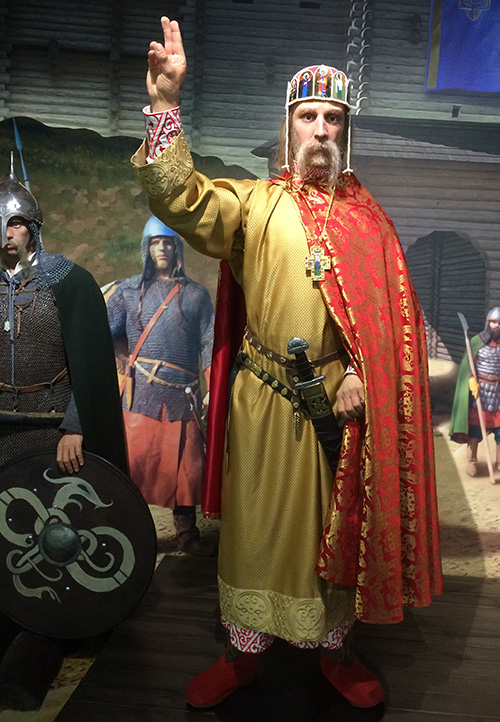

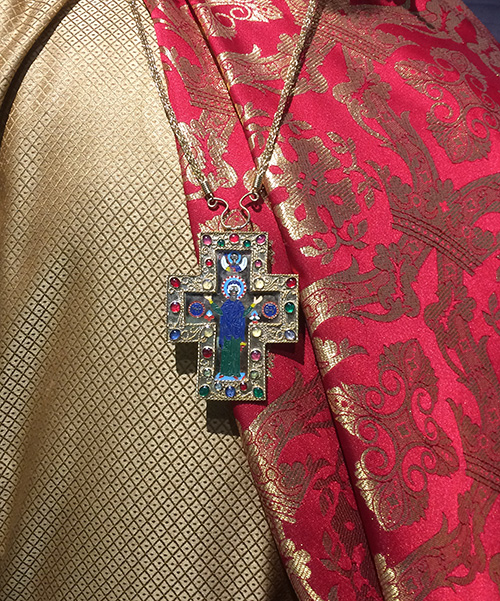
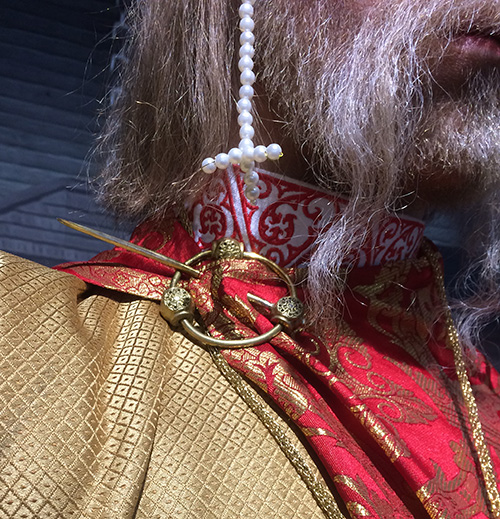
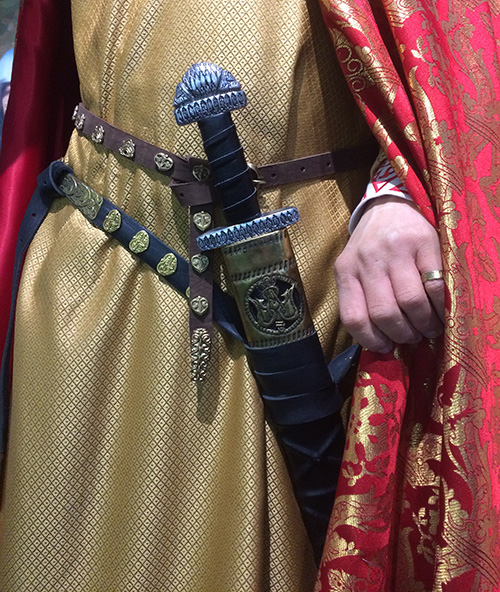
Princess Olga (902-969), princess of Kyiv, grandmother of prince Volodymyr the Great. She married prince Ihor I at the age of 10. For many years, princess Olga ruled in Kyivan Rus’ after the murder of her husband, she was the regent for her son until he reached maturity. Wax figure; the clothing is accurate modern replicas of authentic pieces. You can see that her clothes are also multilayered – in the same fashion as the costume of prince Volodymyr the Great. Her garments are embroidered, including the undershirt. Her headdress is typical for Kyivan Rus’, it consists of a fur-trimmed hat and a white veil that covers the hair and neck. Her shoes are made of leather and ornate. Also, she has a single jewelry item – a glass-beaded necklace with a gold crescent-shaped pendant (it was traditional and typical jewelry at the time).
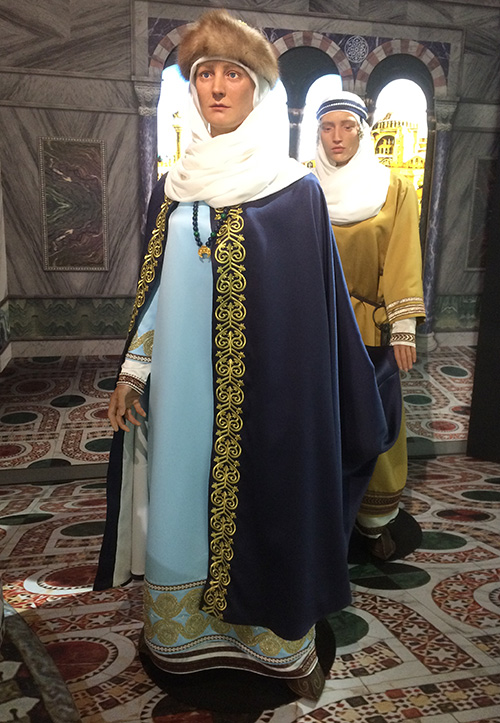

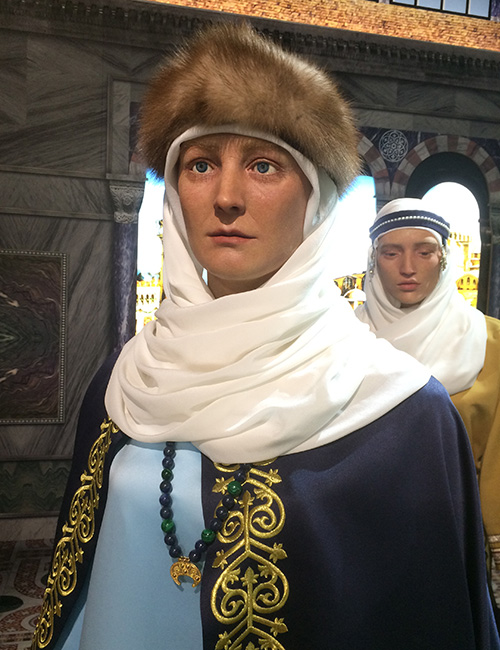
The maid of princess Olga, her name was Malusha, daughter of the local prince Mal. Wax figure; the clothing is accurate modern replicas of authentic pieces. She is also a woman of high origin, though not as high as Olga. That’s why her outfit is similar to Olga’s, but she doesn’t wear a cloak, which was a prerogative of the royals. Malusha wears an embroidered undershirt and a tunic. She also has a white veil on her head but worn with a headband rather than a hat. Her shoes are leather as well. In a close-up, you can see that her headband is adorned with pearls and exquisite silver temple rings in the shape of a bird (by the way, temple rings were shaped differently in different regions of Ruthenia, so we can distinguish the woman’s area of origin by her temple rings). Another curious accessory is a set of keys from the palace’s doors, which she has attached to her belt. They’re much larger than our modern keys, aren’t they?

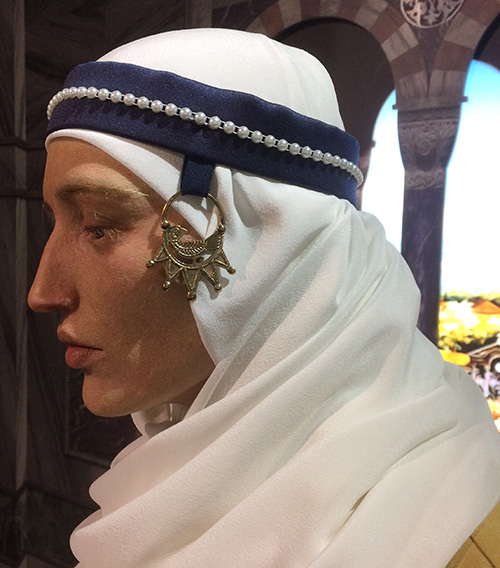
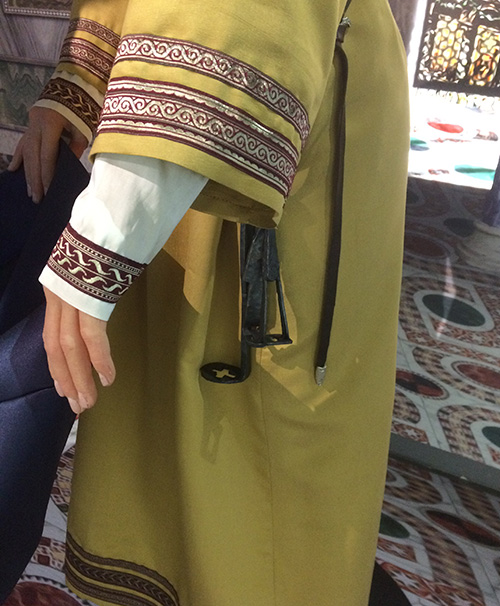
Logothete of the Course, or Postal Logothete (it is simply the title of minister or secretary of state) in Kyivan Rus’. He was a senior official, the head of the imperial department responsible for the post, diplomacy, and intelligence. In the 10th-11th centuries, the logothete performed the functions of the First Minister of the Empire. All this was rather complicated, wasn’t it? Unlike his official clothing. Wax figure; the clothing is accurate modern replicas of authentic pieces. He wears a snow-white ensemble with some gold embroidery as a decoration. Here, you can observe the same multilayered attire – an undershirt, a robe, and a cloak. The outfit is embellished with a single jewelry piece – a round and decorative bronze brooch called “sulgama”. You can see how the fibula or brooch works in the close-up.
